
Pietra portafortuna di gennaio: iniziamo l'anno con il granato
Se il tuo compleanno segna l'inizio dell'anno, sarai felice di sapere che la pietra portafortuna di gennaio è il granato. Gennaio è il mese dei nuovi inizi e delle prospettive positive sul futuro; il granato riflette allo stesso modo questa luminosità e questa gamma di possibilità.
Il nome di gennaio deriva da Giano, il dio degli inizi e delle fini nella mitologia romana. Giano ha due volti, ognuno rivolto al passato o al futuro.
In quest'ottica, daremo un'occhiata alla tradizionale pietra portafortuna di gennaio, il granato, con i suoi vari significati, la sua storia e i suoi usi. Vi presenteremo anche alcune alternative moderne che potete adottare in futuro per celebrare il vostro compleanno a gennaio!
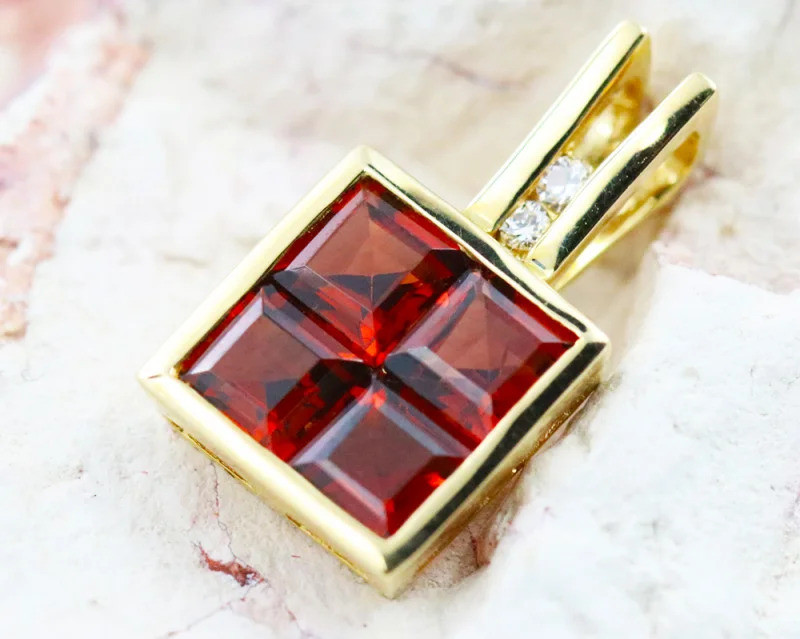
Significato della pietra portafortuna di gennaio: simbolismo del granato
Cominciamo dal simbolismo: il granato, pietra portafortuna del mese di gennaio, rappresenta generalmente amicizia, calore e passione.
Un altro significato di questa pietra semipreziosa di gennaio è quello della protezione, un uso che risale a tempi antichissimi.
Significato storico e culturale del granato, pietra portafortuna di gennaio
La pietra portafortuna del mese di gennaio è notoriamente il rosso brillante, ma è disponibile anche in altre tonalità, dal rosa all'arancione, dal verde al viola.
Il granato è anche la pietra preziosa tradizionale per il secondo anniversario di matrimonio .
Il nome “granato” deriva dal termine latino medievale granatus , che significa “melograno”, perché i piccoli cristalli rossi del granato assomigliano ai semi di melograno.
 Nella foto sopra: collana e orecchini greci in granato e agata , datati I secolo a.C. | Crediti immagine: Metropolitan Museum of Art , Public domain
Nella foto sopra: collana e orecchini greci in granato e agata , datati I secolo a.C. | Crediti immagine: Metropolitan Museum of Art , Public domain
I granati nell'antichità
L'uso documentato dei granati risale all'età del bronzo (circa dal 3300 a.C. al 1200 a.C.), quando questa pietra portafortuna di gennaio veniva utilizzata per abrasivi, sepolture e gioielli reali. Gli antichi usavano i granati anche come talismani protettivi durante le guerre e i viaggi, credendo che la gemma portasse la luce nelle tenebre.
Gli antichi faraoni egizi indossavano collane di granato rosso sia in vita che in morte, e venivano sepolti con queste pietre portafortuna di luglio. Gli egiziani credevano che i granati simboleggiassero la vita.
Nell'antica Roma , i funzionari timbravano i documenti con anelli con sigillo in granato intagliato. I Romani, in viaggio, in battaglia o per evitare malattie come la peste, usavano il granato come protezione.
Un antico mito greco sulle origini del granato riguarda Persefone, la dea della vegetazione che fu rapita e sposata da Ade, dio degli inferi.
Quando Zeus disse ad Ade di restituire Persefone, Ade le diede una melagrana. Dopo aver mangiato i semi di melagrana, si legò ad Ade per l'eternità, trascorrendo metà dell'anno (dall'autunno all'inverno) negli inferi.
Per questo motivo, i melograni e i granati dall'aspetto simile erano associati agli amanti separati, all'eternità e ai cicli rigenerativi della Terra.
Nomi antichi dei granati
Prima di “granato”, altri termini antichi per i granati (e simili pietre preziose rosse) includevano:
Il termine greco antrace (dal filosofo greco Teofrasto), che significa "brace ardente"
Il termine latino carchedonius (dallo scrittore romano Petronio), deriva dal nome greco Carchedonia per Cartagine, un'antica città fenicia
Lo yaqut arabo, utilizzato per il granato, il rubino o lo zaffiro
Il sanscrito e l'induista raktamani , che significa "gioiello prezioso rosso sangue"
Il termine latino carbunculus o carbuncle (dallo studioso romano Plinio il Vecchio), che significa "carbone ardente"
Molti dei primi nomi del granato facevano riferimento alle sue qualità infuocate: colore rosso, brillantezza e resistenza al calore.
Tuttavia, molte pietre rosse nell'antichità venivano chiamate "carbonchi", quindi è difficile sapere se fossero tutti veri granati. Oggi, i cabochon di granato rosso vengono ancora talvolta chiamati carbonchi.
 Nella foto sopra: anello in granato ostrogoto (germanico di epoca romana) del V secolo (alto medioevo) con tratteggio inciso | Crediti immagine: Walters Art Museum, pubblico dominio
Nella foto sopra: anello in granato ostrogoto (germanico di epoca romana) del V secolo (alto medioevo) con tratteggio inciso | Crediti immagine: Walters Art Museum, pubblico dominio
Significato religioso e spirituale
Il granato, pietra portafortuna del mese di gennaio, ha vari significati religiosi e spirituali e proprietà curative.
Cristianesimo :
La Bibbia fa riferimento al granato, derivato dalla parola ebraica nophek , negli ornamenti clericali o reali e come faro di luce guida sull'Arca di Noè.
Alcuni studiosi della Bibbia interpretarono queste menzioni dei granati, sottolineando il colore simile al sangue della gemma e la sua capacità di brillare nell'oscurità, come un simbolo del sacrificio di Gesù Cristo, della parola divina di Dio, della devozione a Dio o della spiritualità cristiana in generale.
Nel Medioevo (intorno al 475-1450 d.C.), i sacerdoti indossavano spesso gemme di granato. Gli anelli dei vescovi cattolici rappresentavano la loro autorità religiosa e il simbolico "matrimonio" con la Chiesa.
Alcuni studiosi cristiani sostenevano addirittura che l'ingestione di carbonchi in polvere avrebbe conferito poteri, giudizi onorevoli e risveglio spirituale.
Pagani :
I pagani franchi come Childerico I credevano che le gemme rosse, come i granati, simboleggiassero l'amore, la vita e la fertilità e le usavano per intagliare divinità come Eros, Freia e Iside.
Islam :
Il Corano fa riferimento a sette cieli nell'aldilà, con il sesto cielo fatto di granati e rubini. Le pietre preziose nel Corano simboleggiavano spesso le benedizioni di Allah.
Induismo :
I guaritori energetici indù usano il granato come pietra per il chakra della radice o della corona. Gli astrologi vedici associano anche il granato rosso a "Rahu" o Marte, il pianeta dell'energia e della guerra, credendo che i granati compensino gli effetti negativi di Marte.
Nel complesso, i granati avevano molteplici significati, sia curativi che dannosi.
Alcune tribù di nativi americani e asiatici usavano i granati rossi come proiettili per provocare danni fatali, mentre i medici medievali curavano vari disturbi con i granati, tra cui febbre, ferite, ittero e persino la peste bubbonica.
Geologia e composizione del granato di gennaio
I granati sono in realtà un gruppo di minerali ampio e complesso, suddiviso in un albero di categorie. Le due principali serie di granati di qualità gemma sono la piralspite e l'ugrandite:
Piralspite : silicati ricchi di alluminio; contiene le specie piropo , almandino e spessartite
Ugrandite : silicati ricchi di calcio; contiene le specie uvarovite , grossularia e andradite
Molte varietà di granato sono miscele di queste specie, spesso all'interno della stessa serie, ma talvolta si incrociano tra le serie.
Cominciamo col parlare delle specie di piralpite di queste pietre portafortuna di gennaio.
Piropo
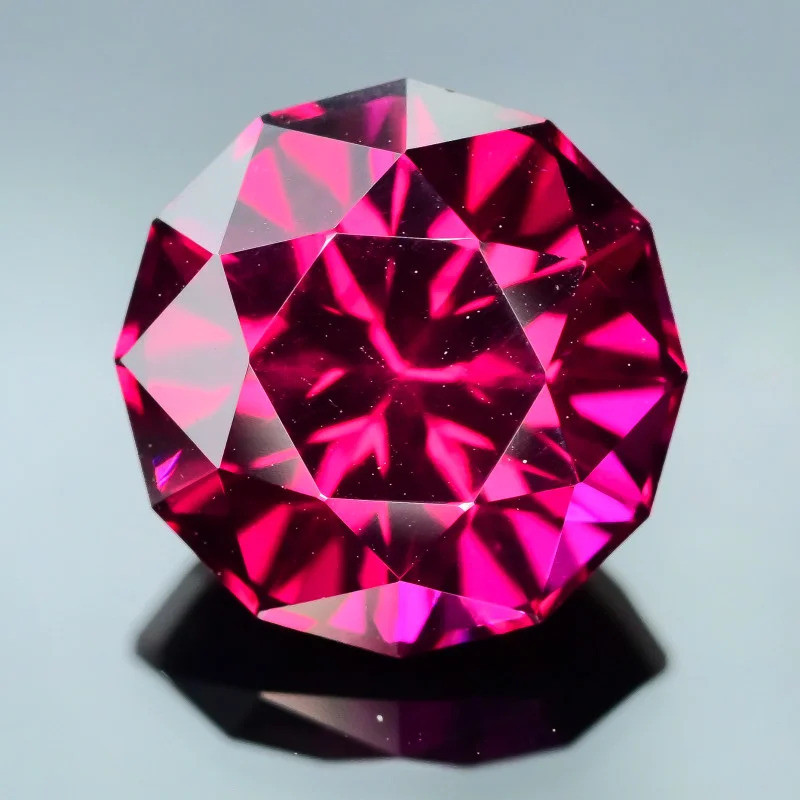 Nella foto sopra: granato Umbalite sfaccettato dal Mozambico
Nella foto sopra: granato Umbalite sfaccettato dal Mozambico
La varietà di granato rosso più nota, i granati piropi, sono silicati di magnesio e alluminio, apprezzati per la loro colorazione rosso sangue o granato. I piropi sono gli unici granati di un rosso uniforme, sebbene le loro tonalità esatte varino con sfumature di viola, arancione, nero e marrone.
Le varietà di pietre portafortuna piropiche includono:
Piropo cromato
Piropo pastello
Granati del Mozambico
Granato stellato
Umbalite
Granato d'uva
Almandino
 Nella foto sopra: granato rodolite sfaccettato
Nella foto sopra: granato rodolite sfaccettato
L'almandino è un'altra varietà di granato estremamente popolare. Questo silicato di ferro e alluminio è leggermente più duro del piropo. I suoi colori vanno dal rosso intenso al rosso violaceo, fino a tonalità più brune.
Le varietà di almandino includono:
Granati del Mozambico
Rodolite
Granato Malaya (Malaia)
Granato stellato
Umbalite
Granato d'uva
Granato Proteo
Spessartite
 Nella foto sopra: granato mandarino sfaccettato
Nella foto sopra: granato mandarino sfaccettato
I granati spessartiti sono la specie di piralspite più esclusiva, nota per la sua colorazione dal giallo all'arancione e l'elevatissima brillantezza. Le varietà di questo silicato di manganese e alluminio includono:
Granato Malaya (Malaia)
Kashmirino
Granato spessartite occhio di gatto
Umbalite
Adesso parliamo della specie ugrandite!
Uvarovite
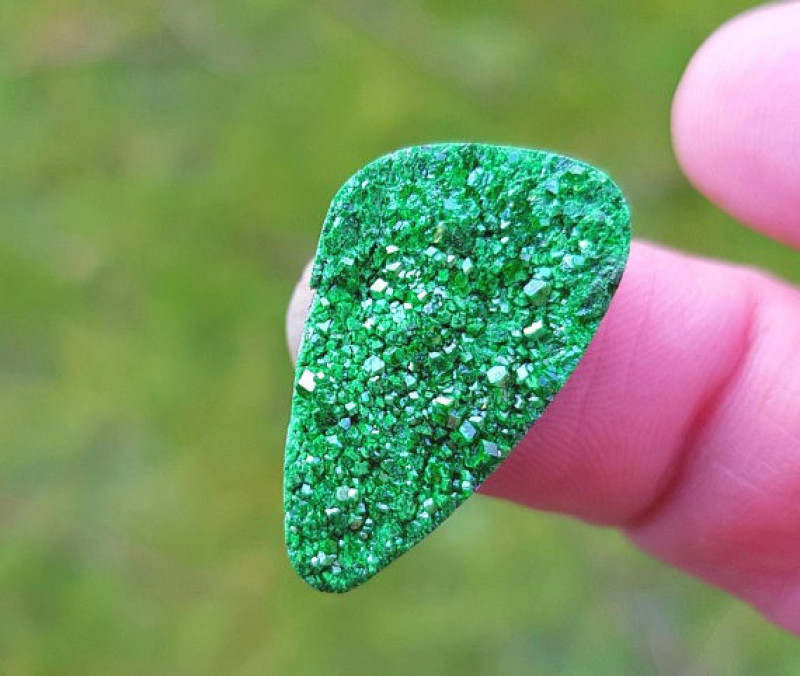 Nella foto sopra: drusa di granato uvarovite
Nella foto sopra: drusa di granato uvarovite
L'uvarovite è un silicato di calcio e cromo ed è la specie di granato di qualità gemma più rara. È anche l'unico granato ad avere un verde uniforme, che va da tonalità medie a scure.
Grossularia
 Nella foto sopra: anello in argento con granati tsavoriti verdi e zirconi cubici
Nella foto sopra: anello in argento con granati tsavoriti verdi e zirconi cubici
I granati grossulariali sono silicati di calcio e alluminio, con il ferro che talvolta sostituisce parte del calcio e dell'alluminio. Sono noti per avere la più ampia gamma di colori e le uniche varietà incolori di qualità gemma.
Le varietà di granato grossularia sono:
Granato imperiale
Granato Menta (o Menta Merelani).
Granato Leuco
Umbalite
Alcuni ritengono che il granato idrogrossulare sia una varietà grossularia, ma tra i gemmologi la questione è oggetto di dibattito.
Andradite
 Nella foto sopra: anello in oro con granato demantoide verde e diamanti rosa
Nella foto sopra: anello in oro con granato demantoide verde e diamanti rosa
Le andraditi sono silicati di calcio e ferro con dispersione (scintillio colorato) e brillantezza (lampi di luce bianca) eccezionalmente elevate. Sebbene non siano così popolari e più rare di altre specie, le andraditi presentano alcune varietà ricercate, come:
Colofonite
Granato arcobaleno
Topazolite
Granato del Mali
Tutte queste varietà contribuiscono allo splendido arcobaleno di colori granato e agli effetti ottici presenti in queste pietre portafortuna di gennaio!
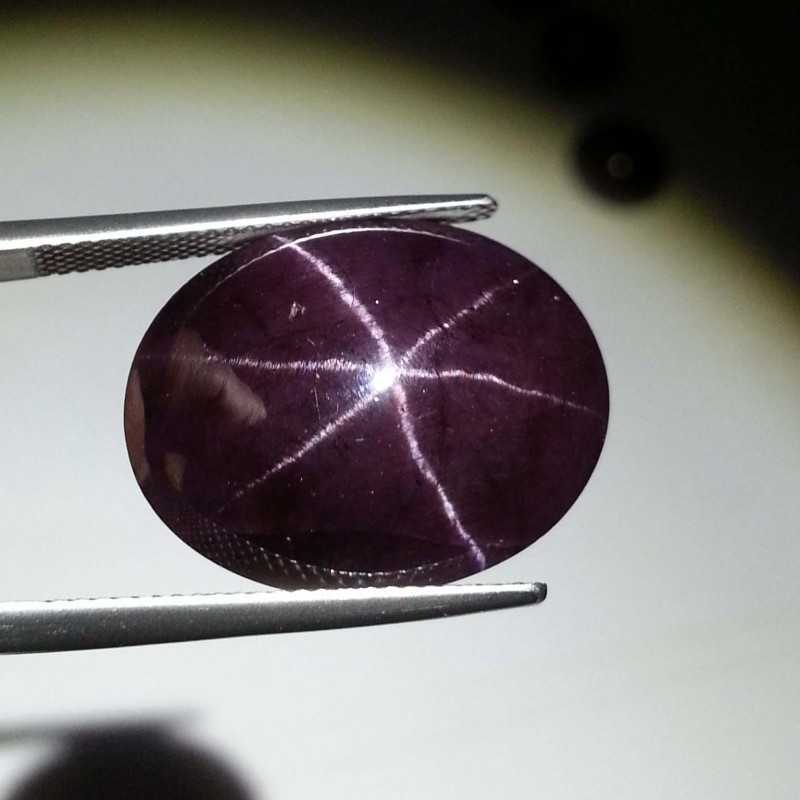 Nella foto sopra: granato stella viola
Nella foto sopra: granato stella viola
Colori e variazioni accattivanti
Di che colore è la pietra portafortuna di gennaio? Il granato è comunemente rosso, ma in realtà è disponibile in un'ampia gamma di colori, e alcune varietà hanno persino effetti ottici speciali.
Granati per colore
Il colore della pietra portafortuna di gennaio può essere praticamente qualsiasi tonalità, anche se il blu è estremamente raro e presente solo in alcune varietà cangianti.
Le varietà più popolari per ogni colore di questa pietra portafortuna di gennaio sono:
Rosso : Piropo
Arancione : Mandarino Granato
Giallo : granato del Mali
Verde : Demantoide o tsavorite
Viola : Umbalite o granato d'uva
Rosa : Rodolite
Incolore : solo granati leuco (grossolani)
Nero : Melanite
Oltre ai vari colori, le pietre portafortuna di gennaio in granato sono disponibili anche con effetti ottici unici.
Granati otticamente fenomenali
Le pietre portafortuna del granato con fenomeni ottici includono:
Granato stellato : mostra una "stella" a 4, 6 o anche 12 raggi di luce riflessa tramite asterismo; solitamente nero, marrone o rosso violaceo scuro, ma può essere di varie tonalità di rosso o viola, incluso il nero rossastro e il viola nerastro.
Granato occhio di gatto : riflette un raggio di luce simile all'occhio di gatto tramite gatteggiamento dovuto a inclusioni parallele di fibre aghiformi o tubi cavi; sempre spessartite
Granato cangiante : cambia colore a seconda dell'illuminazione, solitamente UV (luce solare) e luce incandescente; solitamente dal rosso al viola o dal rosso al verde; i più preziosi sono dal blu al rosso o al viola
Oltre alle loro straordinarie proprietà ottiche, i granati vantano anche straordinarie proprietà curative.
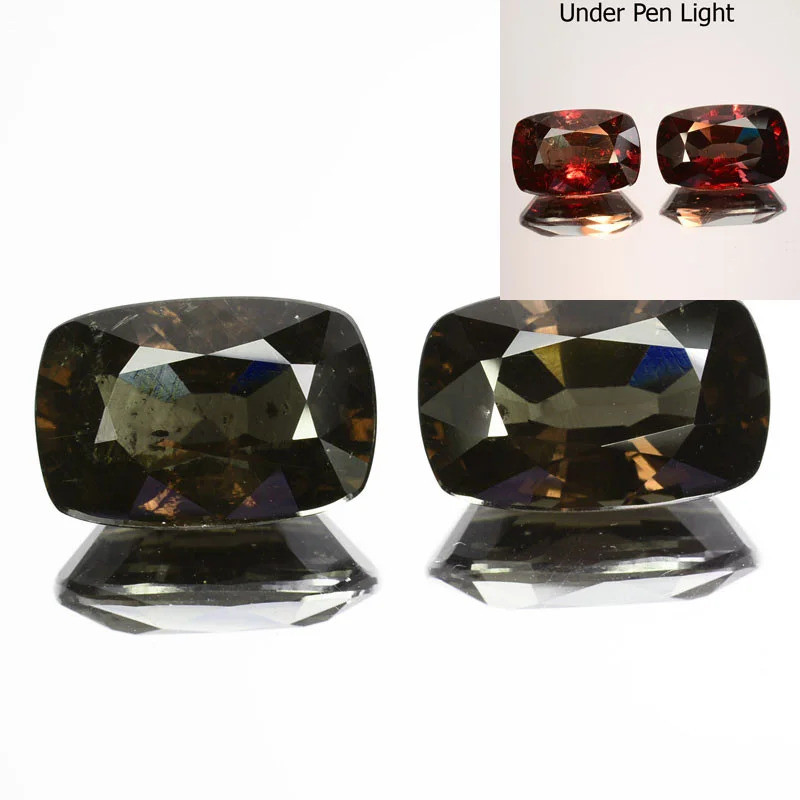 Nella foto sopra: Granati sfaccettati che cambiano colore
Nella foto sopra: Granati sfaccettati che cambiano colore
Proprietà metafisiche del granato
L'uso della pietra portafortuna di gennaio come pietra curativa è persistito fin dall'antichità nelle moderne pratiche di cristalloterapia.
Molti degli usi metafisici del granato sono legati alla sua associazione con il sangue e il cuore, simboli di vita, forza e amore.
Dal punto di vista fisico, si dice che le pietre portafortuna color granato migliorino la circolazione sanguigna, rafforzino il cuore e purifichino il corpo dalle tossine, proprio come fa il sangue vero nel nostro corpo.
Nella guarigione energetica, i granati vengono utilizzati per bilanciare tutti i chakra , consentendo all'energia di fluire liberamente nell'intero essere fisico, spirituale ed emotivo.
Dal punto di vista emotivo, si dice che il granato, la pietra portante del mese di gennaio, aumenti:
Fiducia
Passione
Determinazione
Fertilità
Resilienza
Chi è impegnato in una relazione può trarre beneficio dalle presunte capacità del granato di aiutarlo a sentirsi più a suo agio nell'essere vulnerabile, a liberarsi da sentimenti negativi come risentimento o rabbia e ad aumentare la passione reciproca.
Pietre zodiacali per gennaio
Due segni zodiacali rientrano nel periodo di nascita di gennaio: il Capricorno dal 22 dicembre al 19 gennaio e l'Acquario dal 20 gennaio al 18 febbraio.
Il simbolismo del granato in amicizia, calore e passione è in linea con il suo utilizzo come pietra portafortuna del segno d'aria dell'Acquario. Si dice che gli Acquari, appartenenti al segno d'aria, siano ferventi umanitari che apprezzano l'amicizia e la costruzione di comunità.
I granati possono anche simboleggiare fiducia e devozione, romantiche o meno, e sono soprannominati "Pietra dell'Impegno". Questo si collega meglio al granato, pietra portafortuna del Capricorno. I Capricorno sono leader devoti e affidabili, sia sul lavoro che a casa.
Oltre al granato, ci sono altre pietre portafortuna di gennaio che vale la pena conoscere.
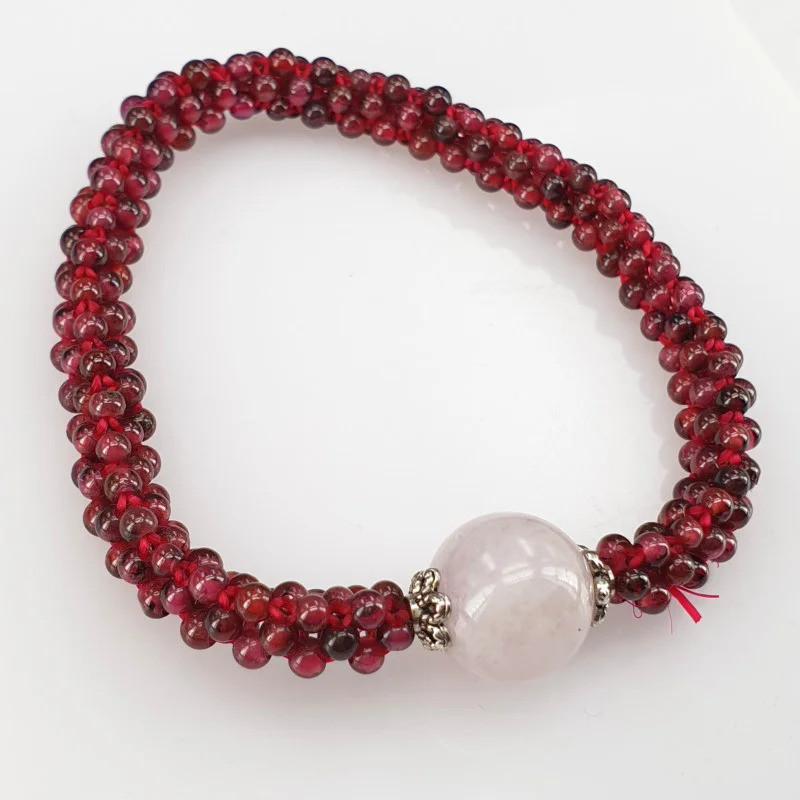 Nella foto sopra: Bracciale di perline con quarzo rosa e granati rossi
Nella foto sopra: Bracciale di perline con quarzo rosa e granati rossi
Pietre natali alternative di gennaio
Il colore più comune per la pietra portafortuna di gennaio è il rosso o una sua variante, come il rosa o il viola.
La principale pietra portafortuna di gennaio, alternativa al granato, è il quarzo rosa , un complemento più leggero al fuoco del granato. Questa varietà di quarzo rosa è spesso lattiginosa e traslucida. La pietra portafortuna alternativa di gennaio simboleggia anche l'amore e l'accettazione universale.
La mistica pietra portafortuna di gennaio, secondo l'astrologia tibetana, è lo smeraldo . Sebbene sorprendentemente diversi, con sfumature verdi anziché rosse, gli smeraldi, come pietre portafortuna di gennaio, riflettono il simbolismo della crescita personale e della rinascita associati al nuovo anno.
Rispetto al granato, il quarzo rosa è meno resistente ma più ampiamente disponibile. Le due pietre sono un'ottima combinazione per i gioielli con le pietre portafortuna di gennaio.
Lo smeraldo è solitamente più resistente del granato, ma spesso è più costoso e ha una minore purezza .
Regali personalizzati con pietre portafortuna di gennaio
Sebbene alcuni considerino l'idea delle pietre natali una pura trovata di marketing, esse hanno una lunga storia di significato. Infatti, l'idea di assegnarle in base al mese risale ai testi biblici.
Le pietre natali sono spesso i primi cristalli con cui si ha familiarità. Si pensa che portino protezione e fortuna a chi le indossa, ma a un livello meno spirituale, le pietre natali sono una celebrazione della vita.
Che tu acquisti le tue pietre portafortuna o le regali a una persona cara, ci sono vari modi per utilizzare le pietre portafortuna di gennaio:
Come collana o orecchini con pietra preziosa singola
Sui gioielli con la/le pietra/e portafortuna di una/e persona/e cara/e
Sui gemelli
Come parte di un set di anelli impilati
Decorare una targa personalizzata con il nome
Come decorazione per la stanza in cristallo intagliato (o grezzo)
La lista continua, quindi sii creativo! Dopotutto, è la tua pietra portafortuna, quindi sfoggiala come preferisci.
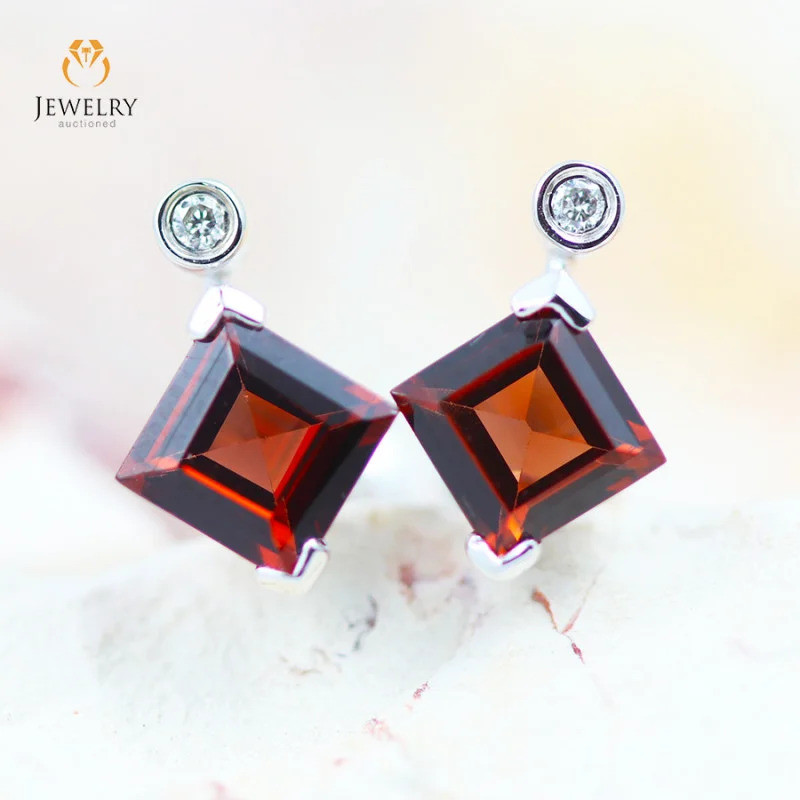 Nella foto sopra: orecchini in oro bianco con granati rossi e diamanti bianchi
Nella foto sopra: orecchini in oro bianco con granati rossi e diamanti bianchi
Festeggia il tuo nuovo te con le pietre portafortuna di gennaio!
Se sei nata a gennaio, sai di brillare come l'iniziatore dell'anno e un riflesso della luminosità del futuro: anche la tua pietra portafortuna dovrebbe rispecchiare questo! Che tu scelga l'intramontabile granato o un'alternativa come il quarzo rosa, l'importante è che tu abbia una pietra portafortuna che ti celebri.
Cerca il Gemstone Encyclopedia
Aste correlate
articoli Correlati
In origine, le pietre portafortuna o gemme erano associate a un segno zodiacale o al mese di nascita di un individuo. Scopri qual è la tua pietra e guarda le pietre che abbiamo in vendita.
8th Feb 2021
L'ammolite è una gemma canadese iridescente, ricavata da gusci fossilizzati di creature estinte chiamate ammoniti. Scopri i benefici, le proprietà, il valore e molto altro dell'ammolite!
6th Apr 2020
I diamanti sono gemme di carbonio incolore e brillanti, note per la loro durevolezza, prestigio e popolarità negli anelli di fidanzamento. Scopriamo insieme la storia, il significato e il valore del diamante!
19th Mar 2020
Articoli Recenti
La pietra del sole a reticolo arcobaleno è una varietà di feldspato con tre splendidi effetti ottici dovuti alla presenza di varie inclusioni. La sua colorazione infuocata e il suo motivo a reticolo la rendono una gemma rara da collezione!
12th Jan 2026
La tulite è una rara pietra preziosa norvegese dalla vivace tonalità rosata, appartenente alla famiglia dei minerali della zoisite, comunemente utilizzata in montature e pendenti per gioielli.
6th Jan 2026
La bismutotantalite è una rara gemma minerale appartenente alla famiglia della tantalite. È relativamente morbida, il che la rende inadatta all'incastonatura in gioielleria. Tuttavia, è un prezioso oggetto da collezione.
5th Jan 2026
Categorie di articoli
How To's is where you will find helpful articles from gem Rock Auctions on how to cut gemstones, select gemstones and buy gemstones.
9 Articoli




